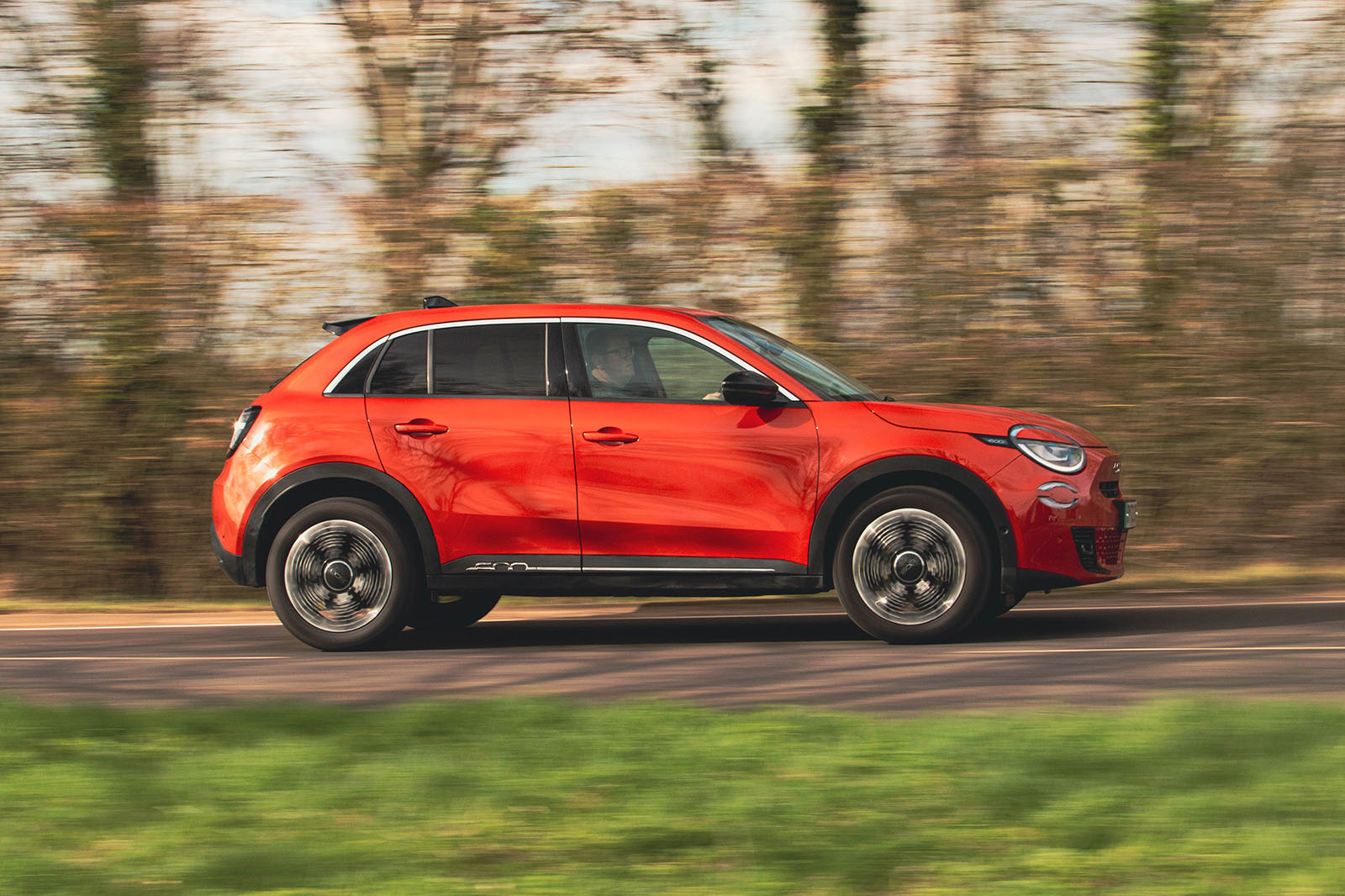This car may be large by supermini class standards but, in some ways at least, you wouldn’t know it.
Although it feels wider across the cabin than is typical of a car in this class, offers quite generous front-row head room and has a 360-litre boot that is fairly roomy by the standards of its peers, its second-row passenger space is relatively mean. Plenty of smaller conventional superminis have better space for those travelling in the back, as do many similarly affordable EVs.
Up front, you sit at a slightly raised hip point, and the way to enter – avoiding both a raised sill with your trailing heels and quite a pronounced lump in the floorpan caused by the under-floor battery – reminded testers of the access quirks of other related Stellantis EVs.
But you sit comfortably enough, in smallish, firmish, slightly thinly padded but decently adjustable front seats embossed boldly with patterned Fiat logos, and in front of fairly well-placed and adjustable controls. The car’s only significant ergonomic disappointments are slightly shallow-feeling front footwells and seat cushions that neither extend nor incline to support your thighs.
The promotional material crows about the charismatic Fiat charm of the car’s interior design, and how cleverly it references the smaller 500, but in actuality it was similarities with the aforementioned Jeep that our testers universally noted.
While the 600e does get its own rounded instrument cowl and upper dashboard design, pretty much everything from the air vents down is shared with the Avenger, including the voluminous, accordion-lidded centre console storage cubby. The 10.3in touchscreen infotainment system is likewise the same in all but the veneer of its graphics, as are its ventilation controls, indicator stalks, steering wheel button consoles and more.
We’re not naive: making good product strategy for Stellantis brands means sharing parts. But the last time EVs from different group brands felt this closely related was probably when the current Vauxhall Corsa and Peugeot e-208 came along in 2020 – and even they had better-differentiated interiors than this.
Granted, this is something a road tester is more likely to notice than an owner, but it’s nonetheless hard to take seriously Fiat’s claim to have made a uniquely Italian cockpit here.
Multimedia system

Both grades of 600e get a 7.0in digital instrument screen and a 10.3in Uconnect touchscreen infotainment system. If you splash the cash on a top-level La Prima model, you get six speakers of audio power rather than four and a factory navigation system.
Both systems have wireless smartphone mirroring, though. Thanks to the presence of a few physical shortcut keys, it’s fairly easy to switch between native and mirroring modes, so most testers used their smartphones for navigation and music.
There are physical controls for heating and ventilation, plus a volume/on-off button, so top-level usability is good enough. But penetrating the touchscreen itself – if only to disable the lane keeping assistance, or to set the cabin pre-conditioning schedule – does take a bit more menu-hopping than is ideal.
If you do want to use the car’s factory navigation system, it will accept destination programming via voice command with dependable accuracy, although the way it filters and suggests charging locations could be more detailed.


































































